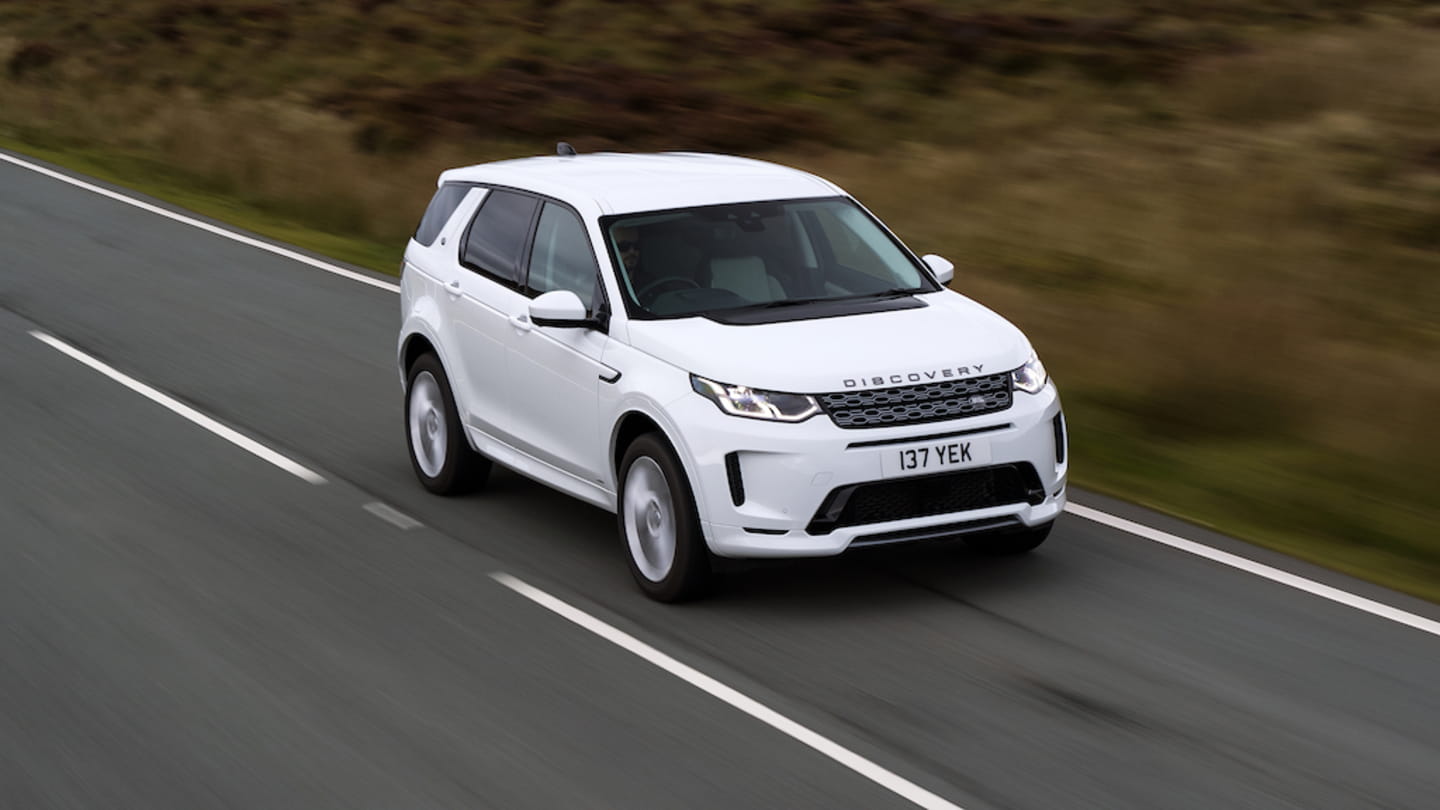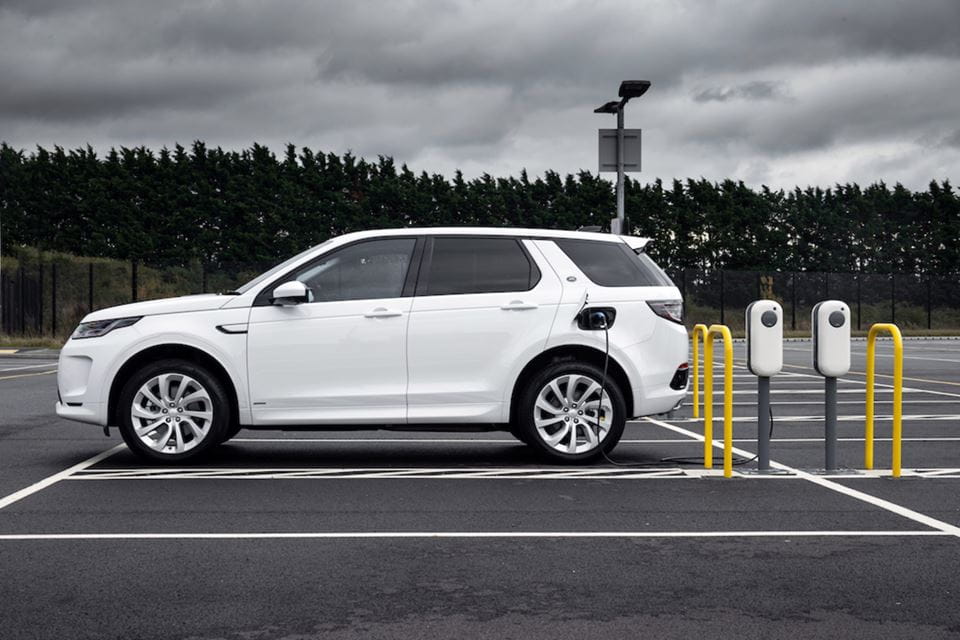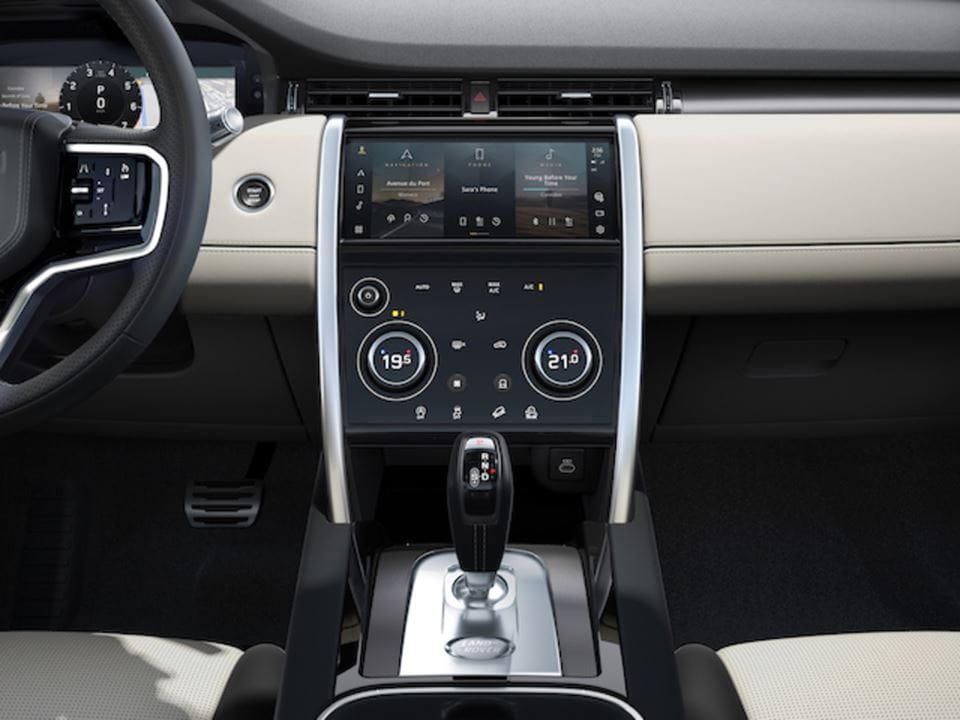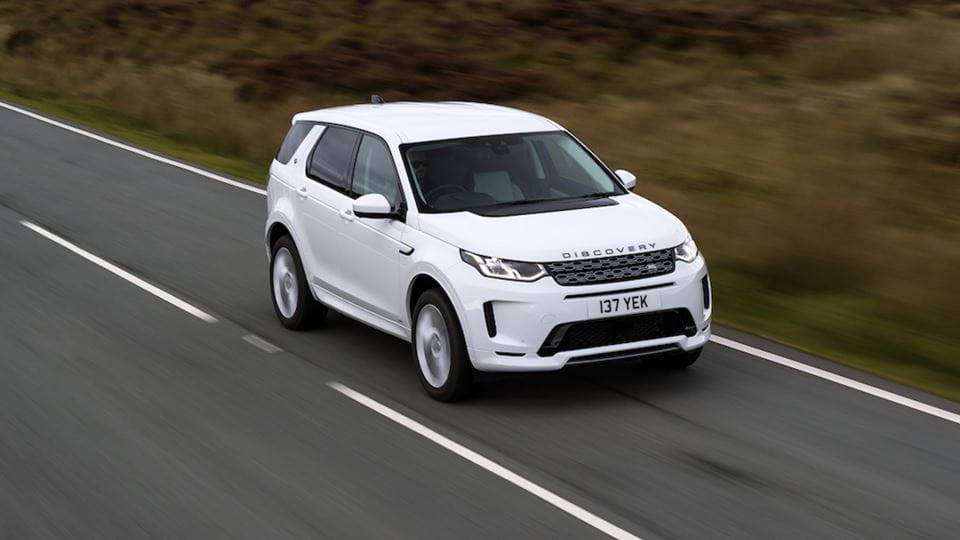
Car review – Land Rover Discovery Sport P300e
Hybrid feelings
Since its facelift, Land Rover's mid-sized SUV has matured into a fearsome rival to the Volvo XC60 and consorts. All the more so now it is available as a plug-in hybrid.

Impressive and cosy interior
The Land Rover Discovery Sport was given a series of updates a year ago. A new centre console was fitted in the interior with a beautifully integrated infotainment system that looks like an expensive touch pad. The air conditioning is now also controlled by a glass panel containing two large knobs.
The infotainment worked well during our test, but the Apple Carplay-link was regularly interrupted. The buttons on the steering wheel also sometimes refused to work. Probably a software issue, easily fixed by an over-the-air update. The integrated SIM card makes this possible.

Practical five-seater
The regular Disco Sport models are still '5+2' seaters, but the integration of the battery meant the hybrid P300e had to go without the folding rear seats. Fortunately, the boot is still very roomy and you can slide the rear seat forward to create even more space. The angle of the backrest can also be adjusted.
This makes the Discovery Sport the ideal family car, where everyone will feel comfortable. The suspension is especially comfort-minded and if you have any doubts: this P300e is just as good off-road as its diesel brothers.

Sporty sound
The P300e's sturdy bonnet does not contain a two-litre four-cylinder as the Velar and Jaguar F-Pace, but a 1.5-three cylinder producing 200 hp, electrically supported by a 109 hp electric motor. This produces a total system output of 309 hp and 540 Nm of maximum torque.
When you put your foot down, the three-cylinder produces a friendly hum, but it consumes a lot. Even with the cruise control pegged at 120 km/h, it is very thirsty: about 10 l/100 km.
DC charging as a USP
The aim is to drive on electric power as much as possible, and the Discovery Sport's 15 kWh battery is good for 64 kilometres if you follow the WLTP standard cycle. In practice, we achieved a good 40 kilometres. That could be more if Land Rover were to have intelligent energy recuperation, like the more recent BMWs and Mercedes models for example.
A real USP of this Discovery Sport is that its battery can also be powered by direct current. That means you can also plug it into a fast charger - unlike most of its competitors.



